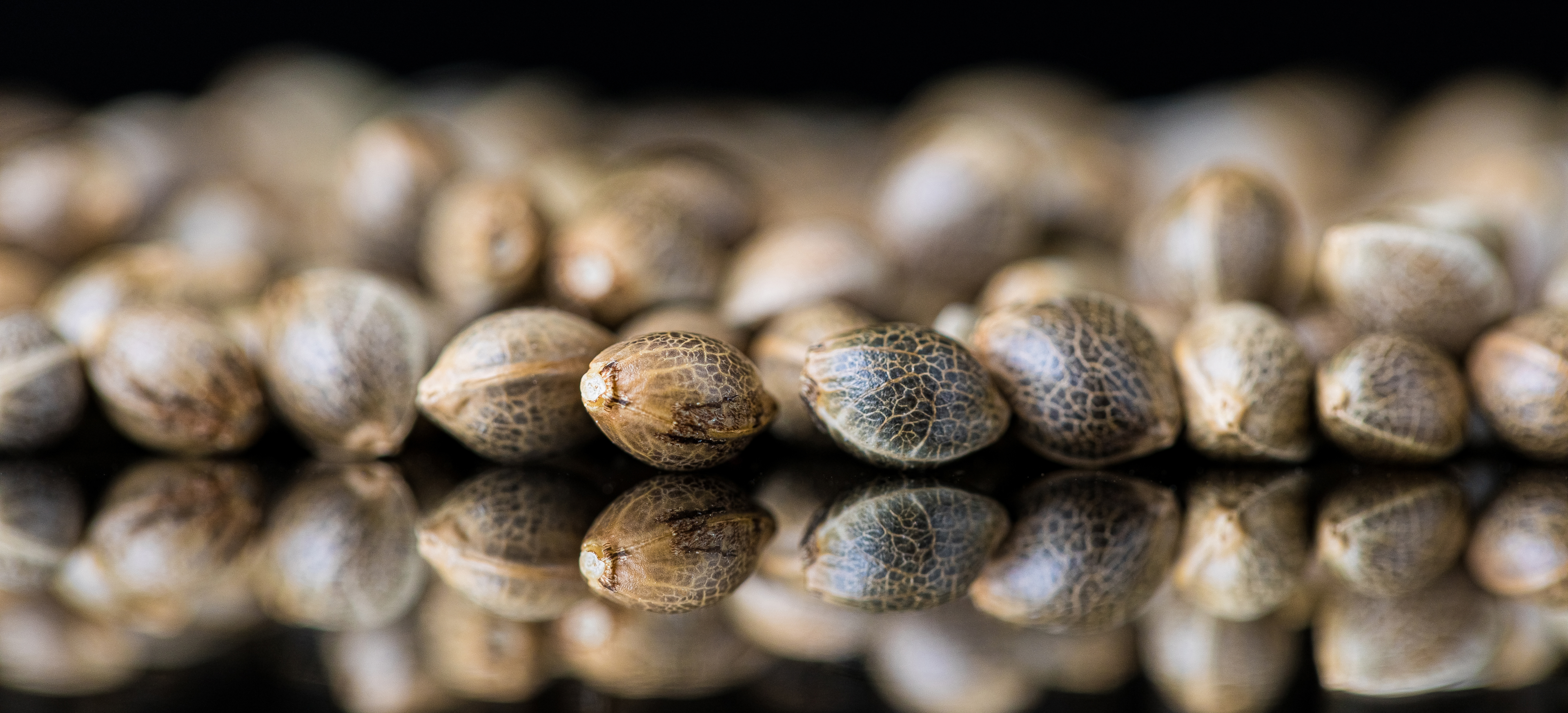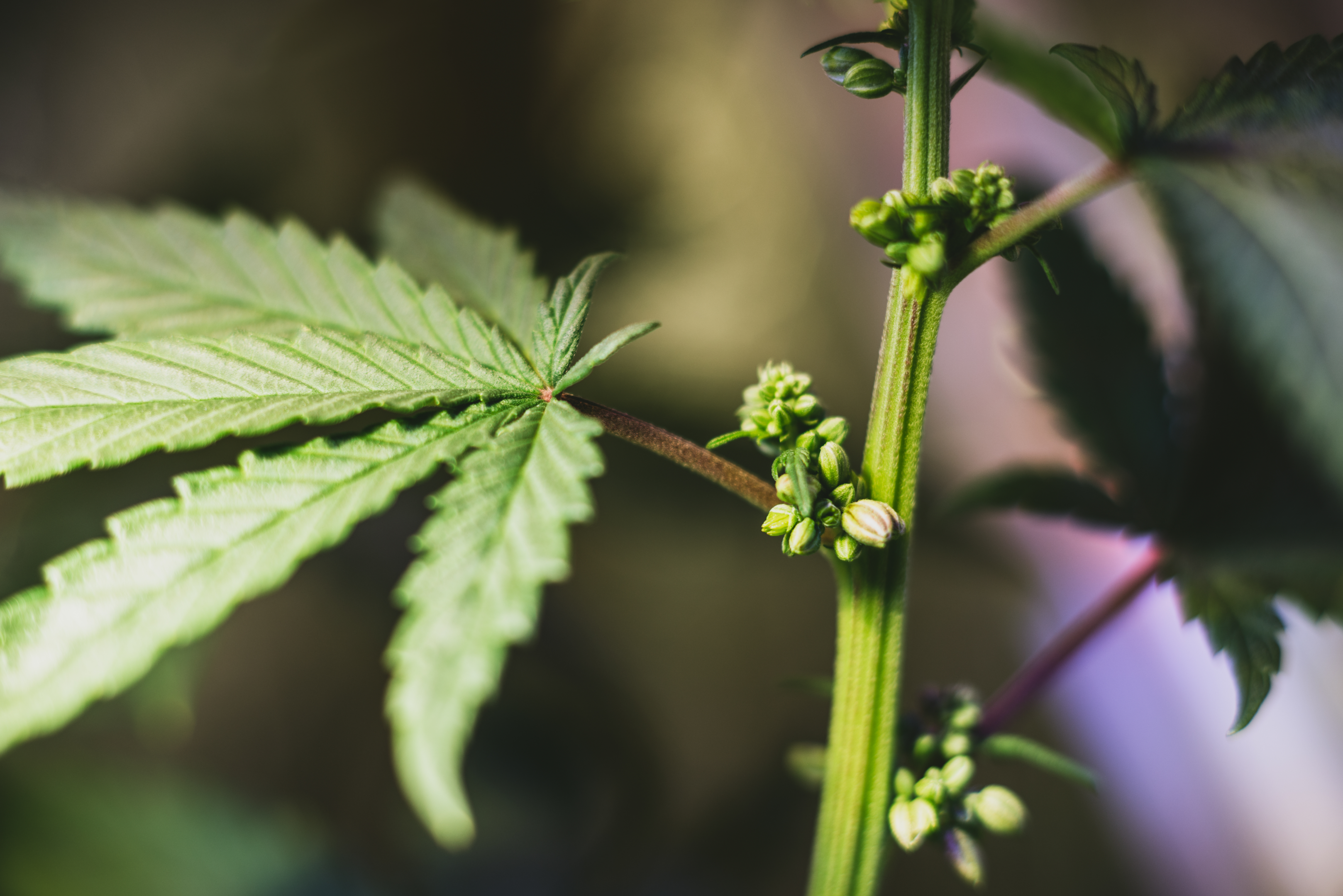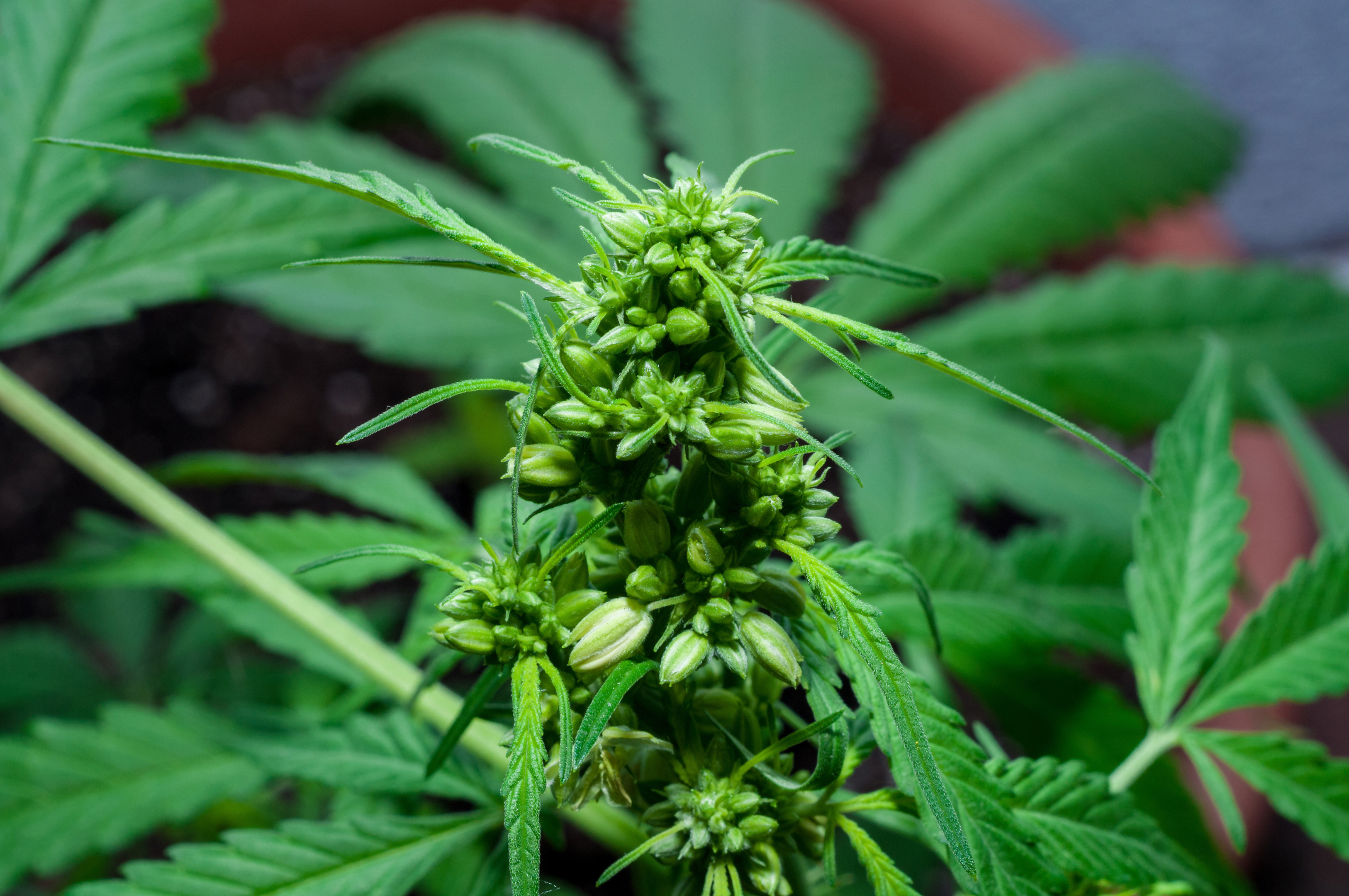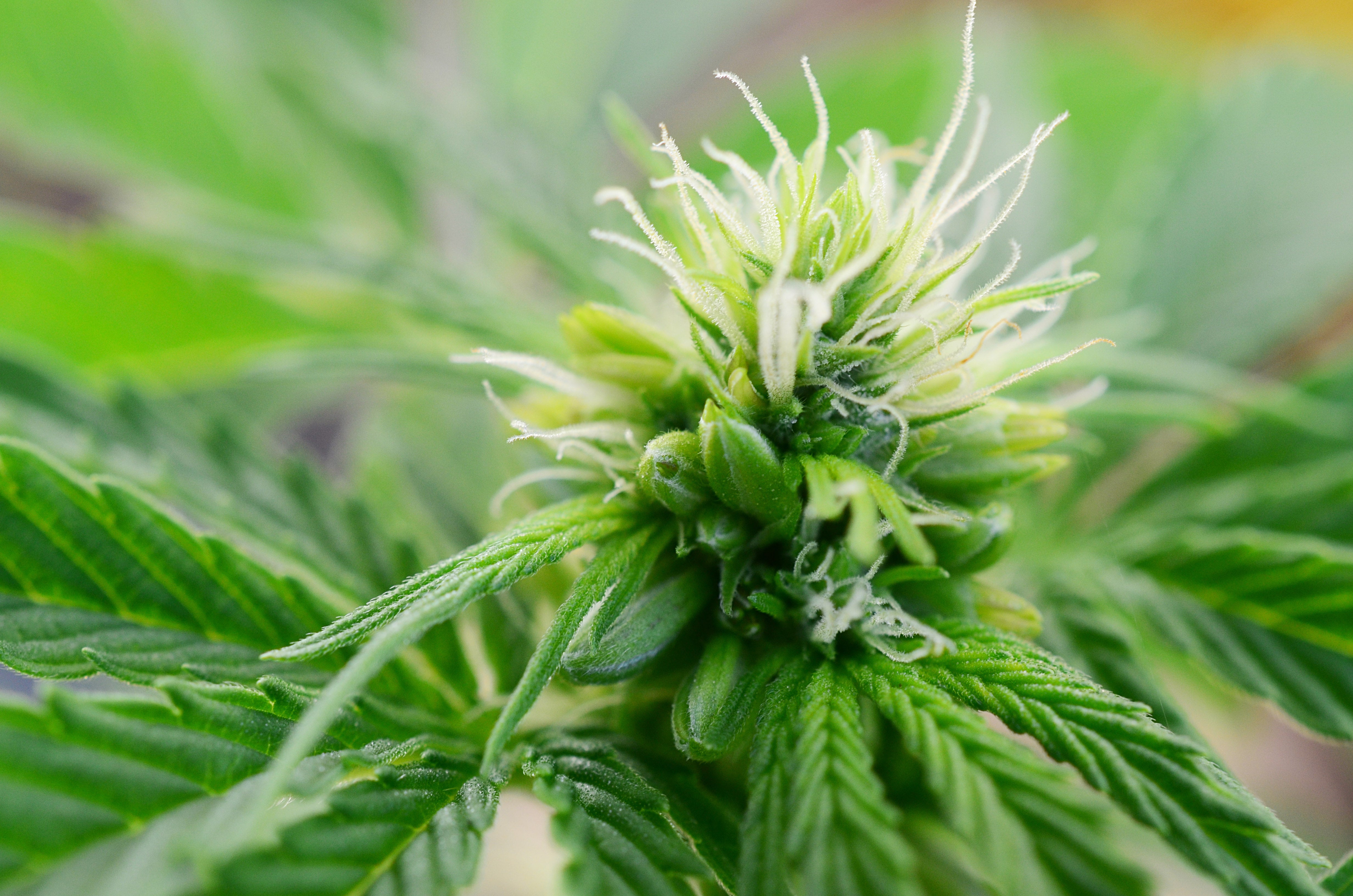In the world of cannabis cultivation, the biological processes of the plant hold significant importance. Normally, cannabis plants reproduce when pollen from male plants fertilizes the flowers (or buds) of female plants.
This process initiates seed production, allowing for the propagation of the species. However, there are unique circumstances where a female cannabis plant may begin to produce seeds without a male counterpart.
If you prefer visual content check out our YouTube channel here.
The Intricacies of Cannabis Hermaphroditism
When we delve into the world of cannabis cultivation, the phenomenon of hermaphroditism presents itself as a significant factor that can impact the growth and yield of plants. Hermaphroditism in cannabis is characterized by the plant developing both male and female reproductive organs, a unique characteristic spurred by various environmental stressors.
The Rise of "Bananas" in Cannabis Plants
In hermaphroditic cannabis plants, male pollen sacs, colloquially referred to as "bananas" or "nanners" due to their elongated, curved shape, start to appear among the female flowers. These sacs are the cannabis plant's response to stress, an inbuilt survival mechanism aimed at self-preservation and continuation of its lineage.

Selfing: A Survival Strategy
When a cannabis plant becomes hermaphroditic, it acquires the ability to produce pollen and to self-pollinate, a process known as selfing. Selfing is an essential survival mechanism for a cannabis plant, particularly in an environment devoid of male plants. The plant begins to use the pollen from the male flowers it produces to fertilize its own female flowers, enabling seed production independently.
In essence, selfing allows a hermaphroditic cannabis plant to produce a full crop of seeds without the presence of a male plant. This strategic adaptation ensures that the female cannabis plant can reproduce and continue its lineage, even in less-than-ideal conditions.
The Trade-Off of Selfing
While selfing is a beneficial survival mechanism for the cannabis plant, it can have less than ideal consequences from a cultivation standpoint. As the plant begins the process of selfing, it diverts its energy away from the production of buds and instead focuses on seed production.
The shift in energy allocation results in a reduced yield of buds, the part of the plant that is most commonly used for medicinal and recreational purposes due to its high concentration of cannabinoids. Moreover, the quality of the buds can also deteriorate, as they become filled with seeds. The process, therefore, has a two-pronged impact, affecting both the quantity and the quality of the harvest.
It's clear that while hermaphroditism, characterized by the emergence of "bananas" or "nanners" and the subsequent process of selfing, is an impressive survival mechanism, it's not without its drawbacks.
It's these nuances of cannabis cultivation that make a thorough understanding of plant biology and growth strategies crucial for both hobby growers and commercial cultivators.
Identification and Prevention of Cannabis Hermaphroditism
Addressing hermaphroditism within cannabis crops requires a clear understanding of the primary environmental stressors that may cause this response. By understanding the triggers, it becomes possible to prevent them and maintain a healthy, productive, and female-dominant crop.
Lighting Inconsistencies: The Unseen Culprit
One of the most common triggers for hermaphroditism is inconsistent lighting. Cannabis plants are photoperiodic, meaning they respond to light and dark periods. During the flowering stage, these plants typically require a strict 12/12 light-dark cycle.
For instance, let's consider an automated indoor grow operation that relies on a timer to control light exposure. If the timer malfunctions, the lights could turn on during the plant's night cycle. This unexpected light exposure disrupts the plant's understanding of its growth phase, causing stress and potentially leading to the emergence of male flowers.
Temperature Extremes: Playing with Fire and Ice
Cannabis plants thrive in moderate climates, usually between 70-85°F (20-30°C) during the light period and slightly cooler during the dark period. Fluctuations beyond this range can cause significant stress.
If, for example, a grow room's cooling system fails during a heatwave, temperatures could rapidly rise above the plant's comfort zone. Similarly, an unexpected power outage in winter could cause a steep drop in temperature. Both scenarios can stress cannabis plants, making them susceptible to hermaphroditism.
Physical Damage: The Cost of Carelessness
Physical damage, either from improper handling or aggressive training techniques, can also induce stress leading to hermaphroditism. An accidental tear while pruning, or excessive bending and breaking of branches during training, can be perceived as threats by the plant.
Imagine inadvertently knocking over a plant during routine maintenance or an intense training technique causing more harm than good. These physically stressful situations can potentially lead to the development of male flowers.
Disease and Nutrient Deficiencies: The Silent Killers
Maintaining overall plant health is crucial in preventing hermaphroditism. Both diseases and nutrient deficiencies can weaken and stress female cannabis plants, making them more likely to develop male flowers.
For instance, if a fungal disease spreads through a crop unnoticed, it can weaken the plants over time, causing stress that may lead to hermaphroditism. Similarly, a miscalculation in nutrient dosage or a lack of essential nutrients can compromise plant health.
If a plant lacks essential nutrients like Nitrogen, Phosphorus, or Potassium, it may begin to exhibit signs of stress, potentially developing male flowers.
Building a Line of Defense
In light of these triggers, several preventative measures can be implemented. Ensuring consistent light cycles with properly functioning timers, maintaining moderate temperatures, handling plants with care, and providing proper nutrition while monitoring for disease can minimize the risk of hermaphroditism.
Important Considerations when Dealing with Hermaphroditic Plants
Genetic Predisposition: The Role of Inherited Traits
Some cannabis strains have a genetic predisposition to hermaphroditism, making it more likely for them to develop male flowers when stressed. Therefore, obtaining seeds from trusted breeders who conscientiously select against hermaphroditic traits is an excellent preventative measure.
By starting with genetically stable strains, growers can drastically reduce the risk of encountering hermaphroditism in their cannabis crops.
Opinion: Investing in quality seeds from the start can save a lot of trouble later. In the long run, the initial cost of good seeds often outweighs the potential losses from low-quality yields or failed crops.
Feminized Seeds vs Regular Seeds

Regular cannabis seeds produce both male and female plants, which makes them genetically more diverse. They haven't undergone any genetic or stress-induced manipulations to ensure feminization. As such, regular seeds can be more resilient and less likely to turn into hermaphrodite plants under stressful conditions.
Feminized cannabis seeds are a popular choice for growers aiming to maximize their yield of consumable cannabis flower. These seeds are engineered to almost always develop into female plants, a process achieved by triggering a female plant to produce male flowers, which then pollinate other female plants. The result is a generation of seeds largely void of male chromosomes, increasing the likelihood of producing female offspring.
This was confirmed by a fascinating study that found hermaphrodite cannabis plants can yield seeds that only mature into female plants. Intriguingly, the study also discovered that the degree of genetic variation between generations remains consistent, regardless of whether the seeds originate from a hermaphrodite or result from cross-fertilization between distinct male and female plants.
This finding expands our understanding of cannabis reproduction and seed genetics, suggesting new avenues for cultivation optimization.
With this said, given that feminized seeds are a product of stress-induced hermaphroditism, they can be more susceptible to turning hermaphrodite when subjected to stressful conditions during their growth cycle.
While feminized seeds are popular due to the guarantee of female plants (and thus bud-producing plants), for those looking to avoid the risk of hermaphroditism, choosing regular seeds might be a safer bet.
The Early Bird Catches the Worm: Detecting Male Flowers
Male flowers, or pollen sacs, develop before female flowers and appear as small, round bulbs at the plant's nodes. Regular inspection, especially during the early flowering stage, can help catch any male flowers before they release pollen.
Opinion: Regular inspection is a small time investment that can pay off significantly. The earlier you can detect and remove male flowers, the better the chances of maintaining a healthy, seedless, female-only crop.

Decisions, Decisions: Handling Hermaphroditic Plants
When a plant starts showing signs of hermaphroditism, growers need to act quickly. Options range from removing and destroying the entire plant to removing only the male flowers, depending on the size of the grow operation and the extent of the problem.
Opinion: It's a tough decision to make, but it's better to lose one plant than risk the integrity of the entire crop. In cases of hermaphroditism, swift, decisive action is often the most beneficial course.
Beyond Basics: Advanced Plant Resilience Strategies
Enhancing plant health and resilience can involve using Integrated Pest Management (IPM) principles, such as introducing beneficial insects or fungi, or practicing crop rotation to prevent pest and disease buildup.
Opinion: Exploring advanced strategies for plant resilience can significantly improve the overall health and yield of your crop. As with many things in life, a proactive approach to plant health often reaps the best rewards.
Unplanned Pollination: Risks and Responses
If a male flower manages to release pollen and fertilize female flowers, the main effect is seed production. This lowers the overall yield and quality of buds. If accidental pollination is suspected, the buds may still be usable but are likely to be less potent and more challenging to consume due to seeds.
Opinion: Although unplanned pollination is undesirable, it's not the end of the world. Resourceful growers can still find uses for seeded buds, such as extraction. The key is to learn from the experience and implement strategies to prevent a recurrence.

Harnessing Knowledge for Successful Cannabis Cultivation
In conclusion, managing a thriving cannabis crop involves understanding the potential for and effectively addressing hermaphroditism. From genetic predisposition to physical stress and unplanned pollination, growers must remain vigilant and informed to prevent the development of male flowers on female plants. Regular inspection and swift action in the face of hermaphroditism can maintain the integrity of your crop, preserving its quality and yield.
Furthermore, growers are encouraged to employ advanced resilience strategies, extending beyond basic care requirements to include practices like Integrated Pest Management and crop rotation. These approaches aim to enhance overall plant health, reducing the likelihood of stress-induced hermaphroditism.
While unwanted pollination is far from ideal for most growers, remember that it's not a complete loss. Resourceful growers can still extract value from seeded buds, offering a tangible reminder that every challenge presents an opportunity to learn and improve.
Now, let's address some common FAQs related to hermaphroditism in cannabis plants:
Q: Can hermaphroditic cannabis plants be prevented entirely?
A: While there's no guaranteed method to prevent hermaphroditism entirely, employing best cultivation practices and stress prevention methods can significantly minimize the risk.
Q: Can you use seeds from a hermaphroditic plant?
A: Yes, but it's not recommended. Seeds from a hermaphroditic plant are more likely to produce hermaphroditic offspring.
Q: Does hermaphroditism affect the potency of the cannabis?
A: Hermaphroditism can lead to seeded buds, which generally have lower concentrations of cannabinoids and terpenes, resulting in reduced potency.
Q: Can stress during the vegetative stage lead to hermaphroditism?
A: While the flowering stage is the most critical period, significant stress during the vegetative stage can predispose a plant to hermaphroditism.
Understanding the intricacies of hermaphroditism in cannabis cultivation is an invaluable asset in achieving a high-quality, fruitful yield. With this knowledge at your fingertips, you're equipped to tackle the complexities of cannabis cultivation head-on.









2 comments
Donw
I have been growing plants from seeds that i got from hermie autoflowers 2 years ago. The potency has been consistant from crop to crop…about 6 in total. I got well over 100 seeds from the hermie crop. Yields have been similiar as well throughout. Its great because in canada auto seeds are about $15 each. Im hoping for another crop of hermies because i am getting low on seeds…lol.
Blair
If a feminized plant hermed to environmental stress…and the genetics are good ….will the seeds be proned to be herms as well …???